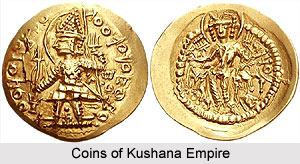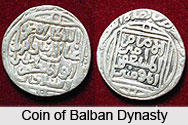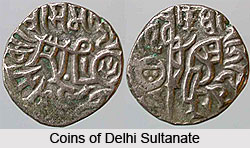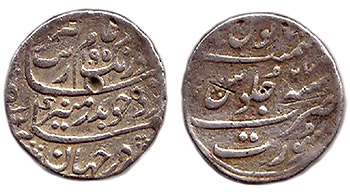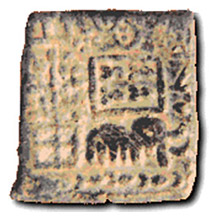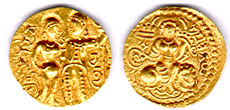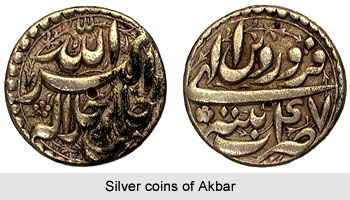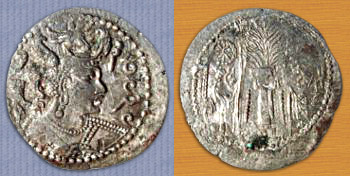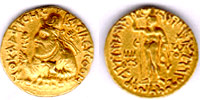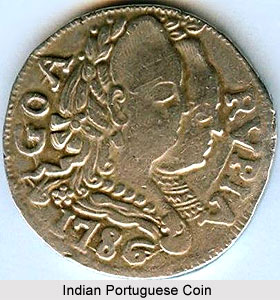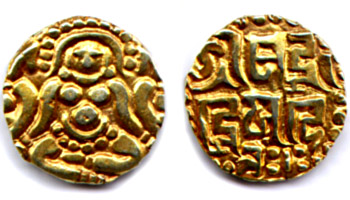 Coins of Ghuri Dynasty were issued on the basis of Islamic norms. Coins were manufactured without regard to individual coin weights, as long as a certain count realised an ideal weight on the scales. Hence in regards circulation the coins of Ghuri dynasty were weighed rather than counted to determine their monetary value. Interestingly, in their Indian dominions however the Ghurids did not impose the Islamic style of coinage format. In every conquered kingdom the local coinage fabric was continued undisturbed. Only in Bengal, where the Ghurids found no metallic circulating medium at the time of conquest, was a non-Indian coinage form initiated. Even then, an indigenous weight standard was adopted for the new coinage. Even the Islamic usage, was replaced on coins issued in India during their reign. The general policy of the Ghurid kingdom east of Ghazni was to adhere to pre-existing usages. The capture of Indian treasuries at the time of conquest was an important source of funds for Ghurid military campaigns in Central Asia.
Coins of Ghuri Dynasty were issued on the basis of Islamic norms. Coins were manufactured without regard to individual coin weights, as long as a certain count realised an ideal weight on the scales. Hence in regards circulation the coins of Ghuri dynasty were weighed rather than counted to determine their monetary value. Interestingly, in their Indian dominions however the Ghurids did not impose the Islamic style of coinage format. In every conquered kingdom the local coinage fabric was continued undisturbed. Only in Bengal, where the Ghurids found no metallic circulating medium at the time of conquest, was a non-Indian coinage form initiated. Even then, an indigenous weight standard was adopted for the new coinage. Even the Islamic usage, was replaced on coins issued in India during their reign. The general policy of the Ghurid kingdom east of Ghazni was to adhere to pre-existing usages. The capture of Indian treasuries at the time of conquest was an important source of funds for Ghurid military campaigns in Central Asia.
The Gahadavala capital of Kashi or Banaras was captured by the Ghurids in AD 1194. The latest currency of this kingdom was the Lakshmi-type base gold coins in the name of Govinda Chandra, most likely issued posthumously by the successors of that king right up to the Turkish conquest. The coinage on the obverse comprised Goddess Lakshmi, reverse three-line Sanskrit legend in Devanagari script. The Ghurids did increase the weight standard slightly from 4.13 g to 4.26 g. This gold coin had been the major currency of the kingdom of Kanauj. Further, the same situation was repeated with respect to the gold Lakshmi-type coinage of Bayana after its conquest in AD 1196. The Kumara Pala base gold coin type was continued under the Ghurids, the legend being changed in Devanagari script. Like the Banaras coins, the weight standard was also increased. The Ghurids found no significant local coinage in use in Bengal on its conquest. New forms were introduced such as a gold tauka of one tola weight and Islamic-norm gold dinars. Delhi came under the Ghurids in AD 1192. The production of the billon bull-and- horseman Dehliwalas was continued unabated. The continuity of production is attested by the fabric similarities. Further, the Rajput legends were removed from the face of the coin under Ghurid dynasty.
The primary area of circulation of the billon coins was contiguous to Delhi. The distribution pattern shows a strong dispersion to the northwest and into Afghanistan; but very little passed into the south or east. Virtually none of the coins are found in the surviving Rajput kingdoms, and their area of circulation would seem to have been limited to the boundaries of Turkish political control.
